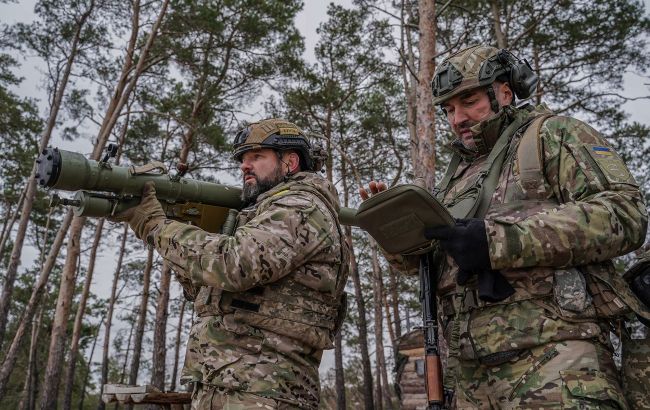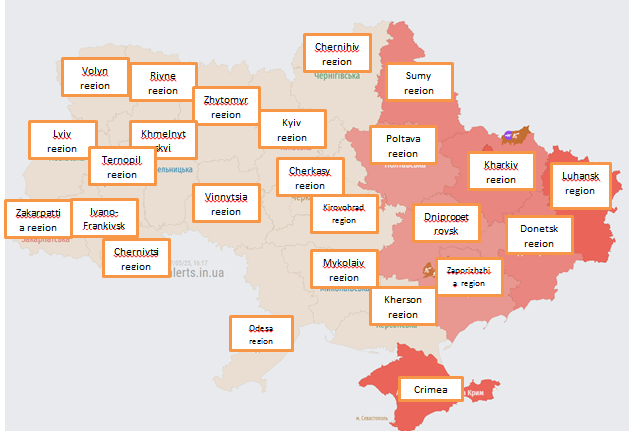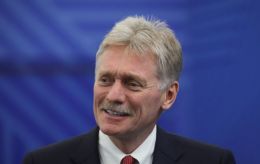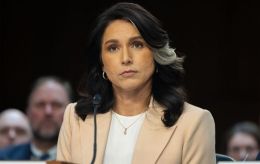Back-to-back air alerts in Ukraine: Why Russia escalates ahead of Putin’s ceasefire
 Photo: Expert explains why Russia became more active before Putin's ceasefire (Getty Images)
Photo: Expert explains why Russia became more active before Putin's ceasefire (Getty Images)
On May 7, air raid alerts became more frequent across Ukraine, and overnight, Russia launched another combined strike. It is worth noting that the Russian army intensified its actions on the eve of the so-called ceasefire announced by President Vladimir Putin.
Read the RBC-Ukraine's material below to find out what the reason for the air raids is and what Russia's goal might be.
Takeaways:
-
Russia attacked Ukraine overnight: how many drones and missiles were launched?
-
Are alerts more frequent in Ukraine ahead of Putin’s ceasefire?
-
Why is the Russian army becoming more active before May 9?
-
Do frequent air raid alerts affect the frontline?
Cause of the air raid alerts
On the night of May 7, the Russian army attacked Ukraine with drones and ballistic missiles.
According to the Air Force of the Armed Forces of Ukraine, Russia launched 187 attack drones and drone decoys overnight. Of these, air defense forces shot down 81 drones. Another 64 drones were lost from radar. In addition, the Russian army launched five ballistic missiles at Ukraine, two of which were successfully intercepted.
Kyiv was among the targets of the drone and missile attack that night. Two people (a mother and son) died in the capital, and seven others were injured, most of them children. More details on the consequences of the attack can be found in the material by RBC-Ukraine.
However, after the night raid, Russia continued its drone attacks on Ukraine. In the morning, an air raid alert was announced again in Kyiv, lasting from 9:36 to 12:44. Alerts also lasted from morning until noon in the Kyiv, Zhytomyr, Chernihiv, Cherkasy, Poltava, Kirovohrad, and Vinnytsia regions.
In the Kyiv region during the day, Russian drones struck people near a store. Four individuals were injured - a teenage girl, a woman, and two men. All were hospitalized at a local medical facility.
In the afternoon, the Air Force reported a group of drones moving in eastern Ukraine. As a result, sirens sounded in the Kharkiv, Dnipropetrovsk, and Zaporizhzhia regions. There was also a threat of guided bomb strikes in the Sumy and Donetsk regions.
Air raid alert map as of 16:00

Why Russia increased attacks
According to military expert Pavlo Narozhnyy, the reason behind the enemy's increased activity is quite simple: the Russian forces are trying to put pressure on Ukrainians.
"These are terrorist attacks. This is pressure on the civilian population of Ukraine. It's very simple. We will most likely continue to feel this pressure for a long time. In other words, you could say that the spring-summer campaign has begun," the expert said.
He recalled that President Volodymyr Zelenskyy previously emphasized that the three-day ceasefire benefits only Russia. Russia needs it so that foreign leaders can visit Russia for the May 9 parade, which in turn will create the illusion that Putin is not completely isolated.
"The idea is that those who see this image will think that everything is more or less fine. That Xi Jinping arrived, or the prime ministers from Hungary, Slovakia, and so on. It's all being done to create a nice picture. There is no real ceasefire. Because if you look at the General Staff’s reports, there are 250–260 combat clashes on the front line. So the situation there is very intense. To say there’s any ceasefire or that these three days will change something - no. They will not change anything, except for creating TV content for Putin. Absolutely nothing else," Narozhnyy explained.
According to the expert, Russia may try to create the illusion of a ceasefire, meaning there could be fewer air raid alerts. He also suggested that the Russian army might not launch drones at Ukrainian cities during these three days, but ultimately, this has no impact on the front line.
"Look, today, drones reached Kyiv and hit civilian buildings in the city. But what effect did that have on the front? The answer is simple - none. Did it reduce the number of bullets on the front line? Are there fewer shells? Nothing changed for the front. Yes, it's an unpleasant situation - someone lost their home, their belongings. But it has no impact on the battlefield," the expert emphasized.
He added that attention should be paid to the General Staff’s reports - "the number of clashes, the number of missiles, the number of guided aerial bombs, because now the most important thing is the front, not the rear".
What Ukraine’s Air Force says
Yurii Ihnat, Head of the Communications Department of the Air Force Command of the Armed Forces of Ukraine, reiterated that Russia’s terror campaign is aimed at pressuring Ukrainians.
"There’s a lot of talk right now about a ceasefire. Ukraine has made its position clear - we want it to be more stable and long-lasting. But Russia continues its attacks. This isn’t just about destroying our cities and infrastructure, it’s also about terrorizing the population and pressuring the Ukrainian nation to break down," Ihnat said.
Putin’s ceasefire on May 9
Russian President Vladimir Putin announced a so-called three-day ceasefire for May 9. On that day, a major parade will take place in Moscow, and the Kremlin has invited several world leaders. Chinese leader Xi Jinping, Slovak Prime Minister Robert Fico, and Serbian President Aleksandar Vučić are expected to attend.
In response, President Volodymyr Zelenskyy said Ukraine is ready for a ceasefire, but for 30 days, not just three, as Putin proposed.
Ukrainian military officials are skeptical of Russia’s ceasefire, pointing out that Russia did not observe it during Easter.
"A ceasefire declared in a couple of areas is not a truce, it's a smoke break," said a spokesperson for the Khortytsia operational-strategic group.

